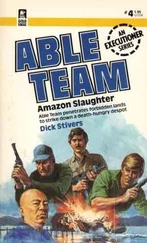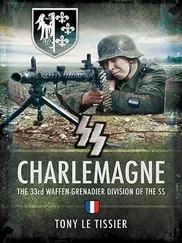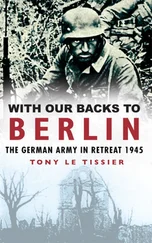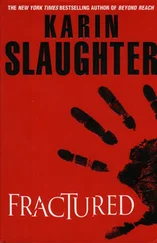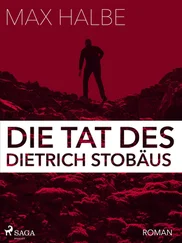However, on 21 January 1945 Hitler issued a Führer-Order severely limiting command initiative down to divisional level, and since then he had persistently interfered with the operations of the formations on his doorstep. Part of this Führer-Order read:
Commanders-in-Chief, Commanding Generals and Divisional Commanders are personally responsible to me for reporting in good time:
a. Every decision to carry out an operation movement.
b. Every attack carried out in divisional strength and upwards that does not conform with the general directives laid down by the High Command.
c. Every offensive action in quiet sectors of the front over and above normal shocktroop activities that is calculated to draw the enemy’s attention to that sector.
d. Every plan for disengaging or withdrawing forces.
e. Every plan for surrendering a position, a local strongpoint or a fortress.
Meanwhile Allied bombing had at last begun to make its mark on the battle front. Railway communications were being seriously disrupted so that supplies were not getting through, and ammunition states were running low. Most serious of all was the lack of motor fuel of all kinds, greatly restricting the number of armoured vehicles available for combat.
Disrupted communications included the troops’ mail, which clearly had an effect on their morale. Those whose homes had not already been overrun had the worry of the continued bombing of the cities and the Western Allies encroaching from the west. They saw themselves as the last bastion against the Bolshevik hordes, and all lived in fear of Soviet captivity, for the ever increasing ruthlessness of the conduct of the war on the Eastern Front by both sides gave them little hope of mercy. Soviet atrocities in East Prussia served as a pertinent reminder of this, which Nazi propaganda did not fail to use to goad the troops on.
From the Baltic Sea to the Czech border, the German defences were organized into two army groups. Army Group Weichsel (Vistula), under Colonel-General Gotthard Heinrici, had the 4th Panzer Army covering the Oder between Stettin in the north and the mouth of the Finow Canal. From there down to Fürstenberg (today’s Eisenhüttenstadt), masking Berlin, came the 9th Army, commanded by General of Infantry Theodor Busse. The final stretch was covered by the 3rd Panzer Army, commanded by General Fritz Herbert Gräser, of Field Marshal Ferdinand Schörner’s Army Group Mitte (Centre).
In succession, 9th Army had the following formations deployed from north to south: CI Corps, LVI Panzer Corps, XI SS Panzer Corps, the Frankfurt Fortress Garrison of corps size, and V SS Mountain Corps. Next in line came V Corps of 3rd Panzer Army.
TWO
Breaching the Oder–Neisse Defences
Simultaneously launching their attacks at 0500 hours Moscow time, 0300 hours local time, on 16 April 1945, the two Soviet fronts fought from widely differing base lines, with equally differing techniques, but both using enormous fire-power.
Marshal Zhukov’s main blow was struck from an established bridgehead across a flat valley bottom to reach the bulk of the German defences strung out along the barrier of the 100-foot high Seelow Heights. To give himself an extra two hours of daylight in which to achieve his objectives, Zhukov had mustered 143 searchlights with a view to guiding and lighting the way for the advancing troops while blinding the enemy. Unfortunately, he had not tried out their use in conjuction with an artillery barrage. The result was night-blindness among his own troops, who were then silhouetted to the enemy against a milky mist. Furthermore, the opening barrage directed on the German forward positions was equally counter-productive, for Colonel-General Gotthardt Heinrici, the army group commander and an expert on such defensive operations, had correctly calculated the time of the attack and had had these positions evacuated during the night, so the damage caused by the bombardment only served to hamper the Soviet advance.
Marshal Koniev’s attack, on the other hand, involved an assault river crossing, and his lengthy opening barrage set fire to the woods on the far bank, to the added distress of the defence. With the coming of daylight, he then had aircraft lay a smokescreen for a considerable distance up and down the river in order to conceal the actual crossing points, and by the end of the day his infantry had advanced 13 kilometres on a 29-kilometre front.
In his memoirs, Zhukov provided a detailed description of this first day of battle:
By about 1300 hours [Moscow Time] It was clear to me that the enemy defences on the Seelow Heights were still relatively intact and that we would be unable to take the Seelow Heights with the order of battle with which we had commenced the attack.
After seeking the advice of the army commanders, we decided to commit to battle both tank armies, in order to reinforce the attacking troops and ensure a breakthrough of the enemy defences.
At about 1500 hours I called Headquarters and reported that we had breached the first and second enemy lines of defence and that the Front had advanced up to six kilometres, but had encountered serious resistance from the Seelow Heights, where the enemy defences appeared to be largely intact. In order to reinforce the all-arms armies, I had committed both tank armies to battle. I went on to report that in my opinion we would breach the enemy defences by the end of the next day.
Stalin listened attentively to me and then said calmly, ‘The enemy defences on Koniev’s Front have proved to be weaker. He crossed the Neisse without difficulty and is now advancing without encountering any resistance of note. Support your tank armies’ attack with bombers. Call me this evening and tell me how things develop.’
That evening I reported to him the difficulties we were experiencing on the approaches to the Seelow Heights, and said that it would not be possible for us to take these Heights before next evening. This time Stalin was not as calm as during my first telephone call.
‘You should not have committed the 1st Guards Tank Army in the 8th Guards Army’s sector, but rather where the Headquarters wanted.’ Then he added: ‘Are you sure you will take the positions on the Seelow Heights tomorrow?’ Forcing myself to remain calm, I replied: ‘Tomorrow, on the 17th April, the enemy defences on the Seelow Heights will be breached by evening. I believe that the more troops the enemy throws against us here, the quicker we will take Berlin, for it is easier to defeat the enemy on an open field than in a fortified city.’
‘We will instruct Koniev to move Rybalko’s and Lelyushenko’s tank armies on Berlin from the south, and Rokossovsky to hurry his river crossing over the Oder and at the same time to strike past Berlin from the north,’ Stalin said.
I replied: ‘Koniev’s tank armies are certainly in a position to make a rapid advance, and should be directed on Berlin. On the other hand, Rokossovsky will not be able to start his offensive from the Oder before the 23rd April, because he will not be able to manage the crossing of the Oder so quickly.’
‘Goodbye!’ said Stalin dryly, and rang off. [1] Zhukov, Reminiscences and Reflections , pp. 366–7.
Stalin was not to speak to Zhukov again during the course of the breakthrough battle, an obvious sign of his extreme displeasure with the way things were going. Marshal Zhukov was in deep trouble, and he knew it.
Despite the overall advance that could be claimed, the second day of battle proved as difficult for the 1st Byelorussian Front as the day before, with the casualty toll continuing to mount alarmingly. The rear areas had to be combed for any personnel capable of being redeployed as infantry to fill the gaps in the forward units, and concern at the consequences of the errors made in the planning and execution of this operation grew. [2] Ziemke, Battle for Berlin , p. 83.
Читать дальше

